Photo
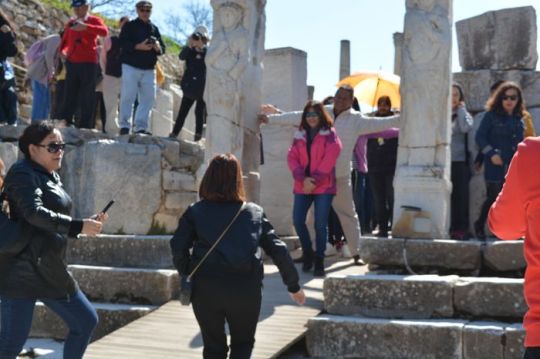
Unjust Accusations
The villagers found themselves labeled as insurgents and faced severe consequences. In reality, this was not a Christian revolt but an uprising of the Bashi-Bazouks. In any other country, such an event would have been rightly recognized as such. Aziz Pacha, previously regarded as sympathetic to the Bulgarians but since removed from his position, ignored the villagers’ pleas for protection. When the inevitable attack occurred, instead of coming to their aid, he led regular troops and artillery against them.
Betrayal and Bombardment
Aziz Pacha’s arrival at the village on Thursday afternoon marked the beginning of a tragic turn of events. Without issuing a surrender demand, he immediately initiated a bombardment, catching the villagers off guard with the sudden roar of cannons. While the Turks claim that a surrender summons was sent before the attack, the villagers vehemently deny this. Considering that the village had previously requested protection from Aziz Pacha three times, it seems unlikely that they would refuse to surrender when faced with regular troops Guided Turkey Tours .
Lack of Evidence
Efforts were made to gather evidence supporting the claim that a surrender summons was issued, but these attempts likely proved fruitless. Even the Turks themselves admitted to the villagers’ appeals for protection, undermining the credibility of any assertion that they refused to surrender. The undeniable truth is that when the artillery barrage began, the villagers, who had bravely prepared to defend their church, succumbed to panic. Despite their prior readiness and the church’s strategic position, they fled in desperation, abandoning their fortified refuge.
0 notes
Photo
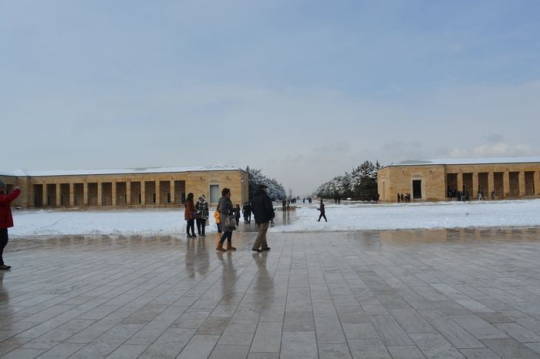
Exchange of Valuable Gifts
Sultan Mahmut I reciprocated the valuable throne received from Nadir Shah with a dispatch of highly valuable gifts. Among these gifts was the renowned “Topkapi Khanjar,” which was sent through the mission led by Kesriyeli Ahmet Pasha.
Sultan’s Decree for Mission
Upon the return of envoy Mustafa Nazif Efendi to Istanbul, he briefed Sultan Mahmut I about the gifts exchanged. In response, Sultan Mahmut I issued a decree assigning Kesriyeli Ahmet Pasha and his mission to Iran, accompanied by exceptionally valuable gifts described as unparalleled Istanbul Private Tours Mevlevi.
Detailed Account by Izzi Suleyman Efendi
Izzi Suleyman Efendi, the private historian to Sultan Mahmut I, provided a detailed account of the incident. He described how a committee was formed to determine the gifts to be sent in exchange for the highly valuable throne. Izzi elaborated on the evaluation process of treasury items, highlighting the meticulous procedures followed.
Evaluation and Documentation
The gifts earmarked for Iran were presented to the Sultan by a committee in the Audience Hall. Under the supervision of this committee, the Chief Jeweller of the Palace, Chief Doorkeeper of the Covered Market, and other officials evaluated the gifts and fixed their prices. A register was maintained for these gifts, and the Chief Doorkeeper of the Treasury was tasked with packaging them and sealing the envelopes under the oversight of the Grand Vizier.
Symbolic Commentary
In addition to documenting the evaluation process, the register book contained a noteworthy commentary emphasizing the symbolic significance of the priceless gifts. It likened these gifts to drops in the sea when compared to the grandeur and authority of the Ottoman State.
Through Izzi Suleyman Efendi’s detailed account, we gain insight into the meticulous procedures and symbolic significance associated with the exchange of valuable gifts during Sultan Mahmut I’s reign.
0 notes
Photo

The Mysterious Bankovsky
The enigmatic figure known as Bankovsky remains shrouded in mystery, his true identity concealed behind a veil of secrecy. Despite efforts to uncover his origins, his real name remains elusive, though it is certain that he was Bulgarian.
Description and Influence
According to Raika, Bankovsky was a striking figure, tall and handsome, with a blonde mustache and piercing blue eyes. His commanding presence and fiery oratory skills captivated the villagers, swaying them with impassioned speeches. Under his influence, they unanimously resolved to revolt upon Servia’s declaration of war, which they anticipated with certainty.
The Need for a Symbol
Recognizing the power of symbolism, the insurgents understood that a flag would galvanize their cause and lend legitimacy to their rebellion. Raika, renowned for her needlework skills, was tasked with embroidering the standard of their uprising. Initially hesitant and aware of the dangers involved, she attempted to dissuade them. However, faced with determination and persuasion from the insurgents, she reluctantly agreed to undertake the task Tour Packages Bulgaria.
Tragic Consequences
To shield her family from potential repercussions, Raika decided to embroider the flag in the house of one of the insurgents, hoping to keep her involvement discreet. Unfortunately, this precaution proved futile. Her father, serving as a priest in the village church, fell victim to the Turkish massacre along with hundreds of others. The flag, now a grim reminder of the rebellion, serves as evidence in ongoing trials.
Symbol of Struggle
The flag, despite its tattered state, bears witness to the villagers’ fervent desire for liberty. Embroidered with a simple yet powerful design—a majestic yellow lion with its paw atop a crescent, symbolizing defiance against Ottoman rule—the flag bears the inscription “Liberty or death” in Bulgarian, embodying the villagers’ unwavering commitment to their cause.
Bankovsky’s influence and the symbolism of the embroidered flag underscore the complex dynamics of the rebellion in Panagurishti. Raika’s involvement, though reluctantly undertaken, tragically intertwines her fate with the unfolding events, highlighting the profound sacrifices made in the pursuit of freedom and independence.
0 notes
Photo

Struggling with Impartiality
My resolve to maintain impartiality in my investigation has swiftly evaporated, giving way to a rising tide of emotion. The horrors I’ve encountered defy judicial detachment. Some truths, upon realization, incite an angry surge of blood and provoke visceral reactions. Certain realities are too grotesque for calm scrutiny, evoking a visceral recoil and a refusal of the mind to dwell on them. These are the realities I’ve encountered in my investigation.
Overwhelmed by Horrors
My initial inquiries have already revealed more than enough to draw conclusions. The forthcoming statistical data from Mr. Baring and Mr. Schuyler will likely suffice. The admitted atrocities, acknowledged even by those sympathetic to the Turks and the Turks themselves, paint a grim picture. The burning of 60 or 70 villages, the slaughter of some 15,000 individuals, predominantly women and children, are staggering figures. The gruesome details of unspeakable acts perpetrated against women and defenseless children, relayed not just by Bulgarians but also by various consuls, German officials, Greeks, Armenians, priests, missionaries, and even Turks, render further investigation redundant Turkey Sightseeing.
Accepting the Grim Reality
Confronted with such widespread and corroborated horror, I find it unnecessary to delve deeper. The enormity and unanimity of the accounts leave little room for doubt or skepticism. The evidence is overwhelming, and the urgency to address these atrocities becomes paramount. Further investigation would only serve to exacerbate the anguish without significantly altering the grim reality that demands immediate attention and action.
0 notes
Photo
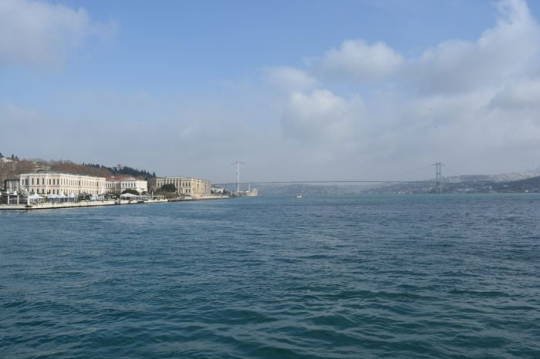
Soviet Influence and Systematic Imitation
Elections and Opposition Suppression
All “elections” in Bulgaria now mirror the Soviet model, where a single ballot list is presented by the Communist Party and government. Opposition is prohibited and treated as sedition, entirely resembling the Soviet electoral system.
Full-Scale Sovietization (Since 1947)
Bulgaria has undergone complete Sovietization. The Communists, in December 1947, introduced a constitution of their own making, with plans for a new one even more closely mirroring the Soviet Constitution. Every aspect of life is organized following the Soviet pattern, with the Communist Party being the sole source of power. The Party structure closely mimics the Soviet model, featuring a Central Committee, the Politbureau, and the Secretariat.
Alignment with Moscow’s Policies
The Bulgarian Communist Party consistently aligns its stance with Moscow’s directives. Notably, when Soviet publications praised Stalin as a “genius-like father of the nations,” Bulgarian Red newspapers echoed the same accolades. Similarly, as soon as the Soviet press denounced the “personality cult,” the Sofia press propagated the same message Guided Istanbul Tours.
Soviet-Inspired Administrative System (Since March 1959)
The administration of the country now operates through provincial, district, and city councils known as “People’s Soviets of the Workers,” resembling the administrative structure in the USSR. This system, introduced in March 1959, is a direct replication of the “decentralization” scheme implemented in the Soviet Union in December 1957.
Military Adherence to Soviet Practices
In the military, the Bulgarian Communists have adopted the divisional system used in the Soviet armed forces. Training methods mirror those of the Red Army, and weapons and equipment are of Soviet origin. The Bulgarian high command consists of Communists who spent their entire lives in the USSR, with many holding commissions in the Red Army during World War II.
0 notes
Photo

Soviet Influence and Systematic Imitation
Elections and Opposition Suppression
All “elections” in Bulgaria now mirror the Soviet model, where a single ballot list is presented by the Communist Party and government. Opposition is prohibited and treated as sedition, entirely resembling the Soviet electoral system.
Full-Scale Sovietization (Since 1947)
Bulgaria has undergone complete Sovietization. The Communists, in December 1947, introduced a constitution of their own making, with plans for a new one even more closely mirroring the Soviet Constitution. Every aspect of life is organized following the Soviet pattern, with the Communist Party being the sole source of power. The Party structure closely mimics the Soviet model, featuring a Central Committee, the Politbureau, and the Secretariat.
Alignment with Moscow’s Policies
The Bulgarian Communist Party consistently aligns its stance with Moscow’s directives. Notably, when Soviet publications praised Stalin as a “genius-like father of the nations,” Bulgarian Red newspapers echoed the same accolades. Similarly, as soon as the Soviet press denounced the “personality cult,” the Sofia press propagated the same message Guided Istanbul Tours.
Soviet-Inspired Administrative System (Since March 1959)
The administration of the country now operates through provincial, district, and city councils known as “People’s Soviets of the Workers,” resembling the administrative structure in the USSR. This system, introduced in March 1959, is a direct replication of the “decentralization” scheme implemented in the Soviet Union in December 1957.
Military Adherence to Soviet Practices
In the military, the Bulgarian Communists have adopted the divisional system used in the Soviet armed forces. Training methods mirror those of the Red Army, and weapons and equipment are of Soviet origin. The Bulgarian high command consists of Communists who spent their entire lives in the USSR, with many holding commissions in the Red Army during World War II.
0 notes
Photo
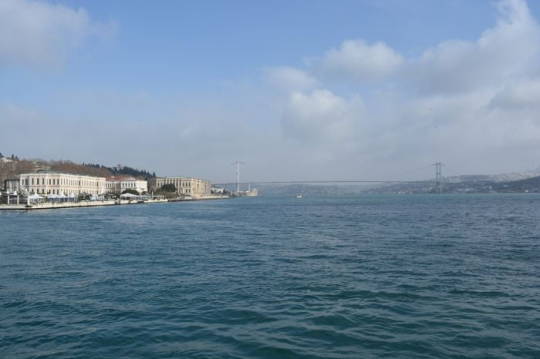
Soviet Influence and Systematic Imitation
Elections and Opposition Suppression
All “elections” in Bulgaria now mirror the Soviet model, where a single ballot list is presented by the Communist Party and government. Opposition is prohibited and treated as sedition, entirely resembling the Soviet electoral system.
Full-Scale Sovietization (Since 1947)
Bulgaria has undergone complete Sovietization. The Communists, in December 1947, introduced a constitution of their own making, with plans for a new one even more closely mirroring the Soviet Constitution. Every aspect of life is organized following the Soviet pattern, with the Communist Party being the sole source of power. The Party structure closely mimics the Soviet model, featuring a Central Committee, the Politbureau, and the Secretariat.
Alignment with Moscow’s Policies
The Bulgarian Communist Party consistently aligns its stance with Moscow’s directives. Notably, when Soviet publications praised Stalin as a “genius-like father of the nations,” Bulgarian Red newspapers echoed the same accolades. Similarly, as soon as the Soviet press denounced the “personality cult,” the Sofia press propagated the same message Guided Istanbul Tours.
Soviet-Inspired Administrative System (Since March 1959)
The administration of the country now operates through provincial, district, and city councils known as “People’s Soviets of the Workers,” resembling the administrative structure in the USSR. This system, introduced in March 1959, is a direct replication of the “decentralization” scheme implemented in the Soviet Union in December 1957.
Military Adherence to Soviet Practices
In the military, the Bulgarian Communists have adopted the divisional system used in the Soviet armed forces. Training methods mirror those of the Red Army, and weapons and equipment are of Soviet origin. The Bulgarian high command consists of Communists who spent their entire lives in the USSR, with many holding commissions in the Red Army during World War II.
0 notes
Photo

The Fall of Communism in Bulgaria November 10 1989
The Palace Coup of November 10, 1989
Assisted by the Soviet Embassy, the leadership of the Bulgarian Communist Party orchestrated significant changes within their ranks. On November 10, 1989, a party plenum released Todor Zhivkov from his position as General Secretary of the Central Committee. Zhivkov, feeling aged and weakened, opted not to engage in another strenuous battle for power.
Quote:
“Look at me – I march on.
Not with the swing and shiver of a victory march
Not along a route lined solemnly,
Not under a rain of flowers.”
Excerpt from ‘In Spite of Everything’ by Bogomil Rainov (b. 1919), translated by Roy MacGregor-Hastie
Subtitle 2: The Years of Democracy: 1990 and Beyond City Tours Istanbul.
Questioning 45 Years of Rule
The events of November 10, 1989, marked a “palace coup” orchestrated by the Communist Party leadership to retain control over state governance. This change was heavily influenced by the Soviet Union. Todor Zhivkov was replaced as the party leader and President of the State Council by Petar Mladenov, a Soviet-educated figure who had served as Foreign Minister and been a long-standing member of the Political Bureau of the Central Committee of the Bulgarian Communist Party (BCP). In January 1990, Andrei Loukanov, another Soviet-trained individual with a history as a minister and representative of the communist elite, assumed the position of Prime Minister. Both leaders emphasized that the Bulgarian “restructuring,” following the example of the Soviet “perestroika,” should focus on transforming and improving the existing system, and the process should be led by the Communist Party.
November 10, 1989, witnessed a significant shift in Bulgaria’s political landscape, as the Communist Party leadership executed a “palace coup,” paving the way for changes and opening the door to a new era of democracy.
0 notes
Photo
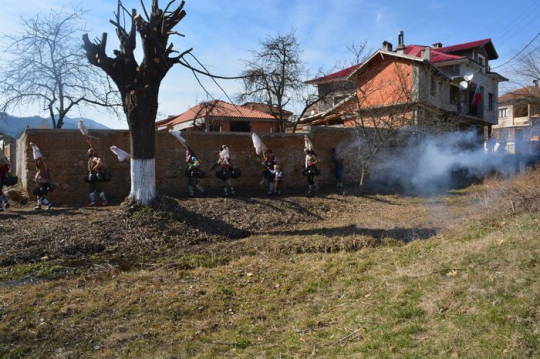
Current Struggles in Bulgarian Villages
The Perils of Daily Life
This article delves into the contemporary challenges faced by Bulgarian villagers, highlighting a pattern of systematic exploitation, pillaging, and abuse. From economic hardships to egregious assaults, the rural population grapples with a harsh reality that demands urgent attention.
A Stolen Livelihood
The first section exposes a troubling aspect of the villagers’ plight — the confiscation of their cattle and horses. This not only disrupts their means of livelihood but leaves them vulnerable to further exploitation. The article explores the ramifications of resisting this seizure, revealing a cycle of violence and oppression.
The Brutal Consequence
Examining the consequences of resistance, the article reveals a disturbing pattern of beatings and sabre attacks against those who dare to voice complaints or resist the pillaging of their possessions. This section sheds light on the harsh reprisals faced by villagers who attempt to stand up against the oppressors Bulgaria Tour.
Women as Targets
The narrative takes a harrowing turn as it exposes the blatant and open assaults on the dignity of women in these villages. Instances of women being seized and outrageously violated come to the forefront. The article emphasizes the urgent need to address this egregious violation of basic human rights.
Begging for Livelihood
A shift in focus to the economic struggles of villagers is highlighted as the article recounts a visit to Kritchina. Villagers from Tchanaktchi approached, desperately seeking financial assistance to repurchase their cattle from Turks who demanded payment for their return. This section underscores the economic coercion and desperation faced by the rural population.
Exploitation in Plain Sight
The plight of another village, unnamed but recognized by authorities, is unveiled. Villagers are only permitted to harvest their crops under the condition that half of the yield is surrendered to Turkish neighbors. This practice of economic exploitation, occurring within a short distance of Philippopolis, is dissected to expose the extent of the villagers’ economic subjugation.
Urgent Appeals for Intervention
The article concludes by emphasizing the urgency of addressing the multifaceted challenges faced by Bulgarian villagers. It calls for international intervention, advocacy, and a collective effort to curtail the ongoing abuses, ensuring that these rural communities are no longer subjected to economic extortion, violence, and assaults on their dignity.
A Call for Justice and Empowerment
In a final reflection, the article echoes the cries of the villagers, urging the global community to stand in solidarity, advocate for justice, and empower these communities to break free from the shackles of exploitation and abuse.
0 notes
Photo
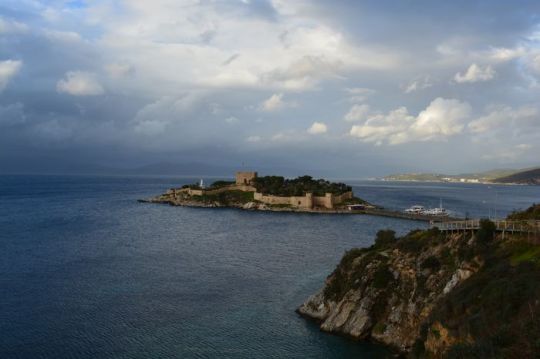
Unveiling Horrors
The Repulsive Realities of Otluk-kui’s Mudir
In the aftermath of the atrocities in Otluk-kui, a town plagued by unspeakable horrors, the figure of the Mudir emerges as a symbol of repulsion and brutality, leaving an indelible mark on the narrative of suffering.
Encountering the Brute The Sinister Presence of the Mudir
The morning following our arrival, the ominous presence of the Mudir cast a dark shadow over Otluk-kui. This Mudir, the same individual responsible for the horrifying maltreatment of a young schoolmistress, presented himself as a figure of unparalleled repulsiveness and filth. The sheer brutality witnessed in his actions marked him as one of the most repulsive brutes ever encountered.
Even the seasoned observer, Mr. Schuyler, could not hide his disdain. A brief exchange of words revealed a complete absence of compliments, prompting Mr. Schuyler to retreat to his room, leaving the Mudir to be entertained—or rather, tolerated—by the remaining occupants. Little did we know that the encounter with the Mudir was far from over, taking a peculiar and extraordinary turn Travel Bulgaria.
A Protracted Encounter Unveiling the Extraordinary Interview
What transpired during the extended interview with the Mudir bordered on the extraordinary, shedding light on the depth of his brutality and the extent of his repulsiveness. While Mr. Schuyler may have retreated physically, his investigation into the Mudir’s actions persisted, unraveling a narrative of horror that would shock even the most callous observers.
The details of this extraordinary interview, though not explicitly outlined, hinted at a continued exploration of the Mudir’s involvement in the atrocities that befell Otluk-kui. Mr. Schuyler, driven by a relentless pursuit of truth and justice, dug deeper into the sinister actions of this repulsive figure. The revelations, as they unfolded, served to expose not only the individual acts of brutality but also the systemic issues that allowed such repulsive conduct to persist.
As we navigate the unsettling truths uncovered in this extraordinary interview, the Mudir emerges not just as an individual brute but as a representation of the broader horrors inflicted upon Otluk-kui. The encounter with this repulsive figure becomes a pivotal moment in the ongoing quest for accountability, as the spotlight turns toward the complicity and responsibility of those in positions of authority. The town’s wounds, inflicted by both external invaders and internal perpetrators, remain open, and the Mudir stands as a chilling embodiment of the darkness that enveloped Otluk-kui during those harrowing days.
0 notes
Photo
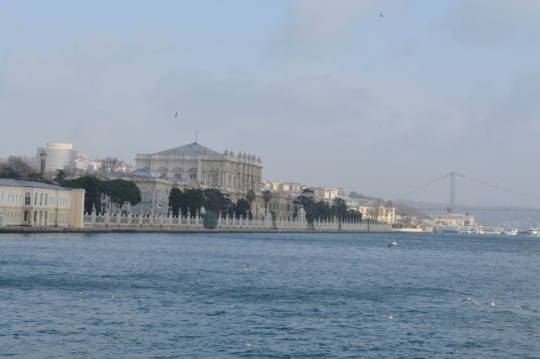
Lord Derby made the statement
When Lord Derby made the statement in the House of Lords that the Government had received no information from the consuls at Scutari, Belgrade, and Galatz about the atrocities of the Bashi-Bazouks, was he indulging in fun at the expense of his noble auditors?
If he had said that the Government had received no information from the consuls at St. Petersburg, Berlin, and Vienna respecting the Dublin riots, he would not have made a more irrelevant statement. As far as the difficulty of communication is concerned, and the time required for the transmission of a letter, Galatz and Belgrade are further away from Philippopolis and the scene of the atrocities attributed to the Bashi-Bazouks than Vienna or St. Petersburg are from Dublin.
The consuls in Belgrade and Galatz know absolutely no more of what is passing here than do the consuls in Bordeaux or Lyons. It is therefore to be fairly presumed that until Mr. Baring was sent out, the Government had absolutely no means of obtaining news, except through the papers, and that they will have obtained no direct information until Mr. Baring shall have made his report.
Compare Statements
As before stated, I also came with the mission of investigating and making a report. I think I came in a fair and impartial frame of mind. I had determined to see for myself wherever it was possible; to make inquiries, to weigh and compare statements, to carefully sift evidence and get at the plain unvarnished truth, and not allow my mind to be influenced by unsupported assertions on either side.
I had looked at the question first from the Christian and then from the Turkish point of view. I had heard the violent assertions of the one party, and the soft-worded apologies of the other City Tours Istanbul, with equal coolness and impartiality, and had especially made a large allowance for the “gross exaggerations of the Christians.”
I had, in truth, listened to both sides with such equal impartiality that I had grown somewhat sceptical, a state of mind, I take it, peculiarly adapted to the spirit of scientific inquiry. I had besides resolved to keep up this frame of mind to the end. It is generally easy enough to bear the ills of other people, and to be calm and judicial where others’ woes are concerned. I am now obliged to confess that I had miscalculated the circumstances.
0 notes
Photo

Bulgarian massacres
As it is intimately connected with these Bulgarian massacres, and will at the same time give an idea of the condition of the Bulgarian people, I may as well give it in full, as she gave it to me. Her name is “ Raika,” and she is the daughter of a priest in the village of Otlukkui, or Panagurishti, about twenty miles from Tatar-Bazardjik. At the age of twelve she had been already remarked for her intelligence and beauty, and a kind of village literary club, which exists in the place, decided to send her to school and educate her.
For this purpose a subscription was set afoot, and the requisite funds were soon raised. They decided to send her to Eski-Zara, where the American missionaries had established a school for girls, which they afterwards turned over to the Bulgarians, by whom it is now conducted Private Turkey Tours.
American and English
It may not be amiss to remark here that the American and English missionaries have done an immense deal of good in Bulgaria by establishing schools throughout the country, educating teachers, and showing the Bulgarians how to organise and establish schools for themselves. In this they have succeeded so well that there is scarcely a village in Bulgaria without its school.
Raika remained at this school four years, and acquired seemingly a very fair education; better, perhaps, than many an English girl gets in a better school. She had a particular fondness for needlework, and she acquired so much skill in all sorts of curious and tasteful embroidery that she became famous throughout all the country.
When she returned to her native place, after four years’ study in a boarding-school, she was looked upon as a veritable marvel by all the people around her. It was particularly the wonders she worked with her needle that astonished and pleased them, and this, with her wonderful education and her sweetness of character, made them begin to look up to her as a being of a superior order.
She was now sixteen, and there was a career already marked out for her— that of a teacher ; and she entered upon it gladly. The schools in Otlukkui, or Panagurishti, as it is called by the Bulgarians, were at that time in a very flourishing condition. Since hearing Raika’s story I have been there, and I took pains to inquire into the matter.
0 notes
Photo
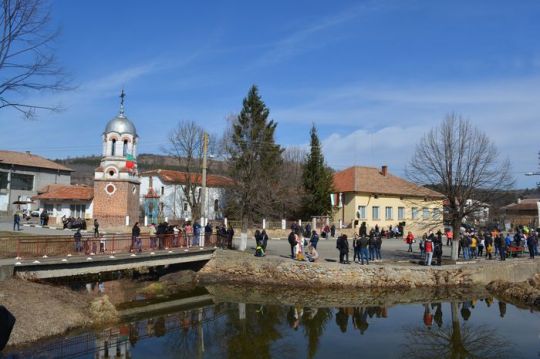
Kubrat’s third son
Kubrat’s third son – Asparuh, led his father’s tribe across the river Dnepr to settle in a naturally fortified area called Ongal among the rivers Danube, Prut and Dnestr. Soon the Proto- Bulgarians came into union with the Slavs who had already settled in the lands south of the Danube and together they recognized the Byzantine Empire as a common enemy. Out of this union was born the First Bulgarian Kingdom…
In the foundations of the new state lied elements of the social organization and the spiritual traditions of both Slavs and Proto-Bulgarians. Major position in the economic life of the Proto-Bulgarians occupied animal breeding, and in particular horse husbandry. All pastures and herds were common but unlike the situation in Slavic society, slavery was rather wide-spread among the Proto-Bulgarians. Besides with hunting and fishing, the tribes were familiar with the potter’s wheel, the art of jewellery, hide processing, carpentry and the blacksmith’s craft Tour Packages Bulgaria. The basis of further social and cultural development was provided by the monotheistic religion – with Tangra, the Supreme God of Heaven – combined with many different beliefs and cults. A sign of some advance in that culture was also the Proto-Bulgarian calendar system based on a twelve-year lunar zodiac cycle.
Proto-Bulgarian
A map of the lands on which the first Proto-Bulgarian horde had settled.
So in the second half of the 7th century before the Slavs and the Proto-Bulgarians stood the great historical task of establishing a new state under the name of Bulgaria…
Though He Live Well Man Dies and Another Is Born, So May The Last Born Gazing on This Remember Him Who Made It…
Khan Omurtag’s inscription from the first half of the 9th c.
0 notes
Photo

Kubrat’s third son
Kubrat’s third son – Asparuh, led his father’s tribe across the river Dnepr to settle in a naturally fortified area called Ongal among the rivers Danube, Prut and Dnestr. Soon the Proto- Bulgarians came into union with the Slavs who had already settled in the lands south of the Danube and together they recognized the Byzantine Empire as a common enemy. Out of this union was born the First Bulgarian Kingdom…
In the foundations of the new state lied elements of the social organization and the spiritual traditions of both Slavs and Proto-Bulgarians. Major position in the economic life of the Proto-Bulgarians occupied animal breeding, and in particular horse husbandry. All pastures and herds were common but unlike the situation in Slavic society, slavery was rather wide-spread among the Proto-Bulgarians. Besides with hunting and fishing, the tribes were familiar with the potter’s wheel, the art of jewellery, hide processing, carpentry and the blacksmith’s craft Tour Packages Bulgaria. The basis of further social and cultural development was provided by the monotheistic religion – with Tangra, the Supreme God of Heaven – combined with many different beliefs and cults. A sign of some advance in that culture was also the Proto-Bulgarian calendar system based on a twelve-year lunar zodiac cycle.
Proto-Bulgarian
A map of the lands on which the first Proto-Bulgarian horde had settled.
So in the second half of the 7th century before the Slavs and the Proto-Bulgarians stood the great historical task of establishing a new state under the name of Bulgaria…
Though He Live Well Man Dies and Another Is Born, So May The Last Born Gazing on This Remember Him Who Made It…
Khan Omurtag’s inscription from the first half of the 9th c.
0 notes
Photo

Tiara on head
The foot or southern panel, represents four young men standing in pairs, as if engaged in conversation, clad in short tunics, girded at the waist, and carrying sticks in their hands.
The panel on the eastern side is carved to represent a satrap, tiara on head, clothed in a long flowing mantle, or cloak, and seated in an arm-chair, with a sceptre in his left hand. He is watching the departure of a four-horse chariot, into which the driver, closely veiled and wearing a short tunic girded at the waist, is in the act of mounting. At the horses’ heads stands a groom leaning on a staff, holding the fretting steeds, and at the same time looking in the direction of a fellow-servant on his right holding a saddle-horse. Behind the satrap are two figures apparently in the act of conversing with each other.
The western panel represents a hunting scene, in which the central figure is that of the satrap, on horseback, in a long flowing cloak, and with raised lance holding a lion at bay. Opposite him is the figure of another horseman with couched lance charging the king of beasts. Towards the right is the figure of a frightened horse galloping off, and dragging along the ground its dismounted rider, whose hands still clutch the reins. Behind the satrap are the figures of a wounded hind, and of a horseman pulling up his galloping steed.
Hamdl Bey at Saida
The Weepers or Mourners’ Sarcophagus, No. 4,9. —This was discovered by Hamdl Bey at Saida in 1887, and is of white marble; it was originally coloured, and traces of blue, red, and yellow are still visible on it. During the process of excavation a corner of this sarcophagus, and another of its cover, as well as a head on one of its panels, were broken.
This monument belongs to the Attic school of art of the fourth century, and is in the form of a Greek temple. Its frieze is ornamented with about a hundred little carved figures of archers and hunters, in Phrygian caps, short tunics drawn in at the waist, and flowing cloaks, engaged in hunting bears, lions, panthers, wild boars, etc. The carvings on the sides represent incidents of the chase, while those at the head and foot depict the return of the hunters loaded with game.
At each of the four corners is a pillar, and each side is divided into sections by five Ionic columns, while the head and foot are each divided by two only. Every alternate column bears the figure of a woman; in all there are eighteen of these female figures, all in mournful attitudes, and clad in variously draped long robes which cover them from head to foot. These figures are most symmetrically arranged; in the centre of each side are two women standing up, and to the right and left of them is another woman in a sitting posture, and at the corners another standing ; at the head and foot of the sarcophagus is the figure of a woman seated, and to the right and left of her another female figure standing.
0 notes
Photo
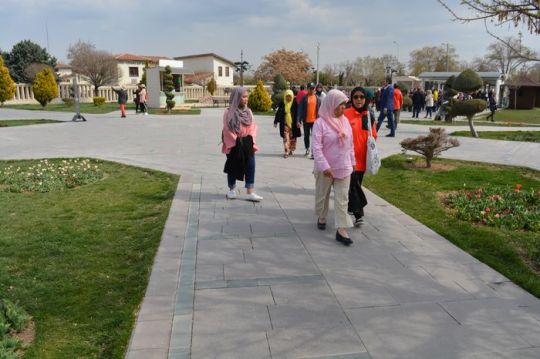
Henricus Dandolo
The galleries, styled the gynecy, were reserved for women. The North door, through which visitors enter, leads directly to them. They are wide and spacious, and being 97 feet above ground afford a most impressive view of the interior of the mosque, and are divided into two unequal parts by a marble wall, once covered with bas-reliefs, most of which have been obliterated. In the smaller part the Patriarch held his synods, or convocations, during the last years of the Empire; and here, on the floor near the marble wall, may be seen a marble slab, bearing the name ‘ Henricus Dandolo ; farther on, at the bottom of this gallery, on the floor, is a broken porphyry basin, brought from Bethlehem, and supposed to be that in which Mary washed the swaddling clothes of the infant Jesus.
A species of balcony, near this relic, commands an uninterrupted view of a face of Christ in the act of benediction, in mosaic work, on the ceiling of the half-dome, over the place where the altar formerly stood. The marble cornice on the left gallery wall is supposed to be the gate which led to the chapel into which a priest fled with the sacramental elements on hearing that the Turks had taken the city. The superstitious Greeks believe he is still there, and will emerge from his place of concealment when the mosque becomes a church again. The existence of this chapel was discovered in 1848 by Messrs. Fossati. These galleries should be visited on Ramazan nights, when the mosque is illuminated, and the Turks are to be seen at prayer.
The nine doors of the inner narthex lead into the nave, which is 269 feet in length by 240 feet in width. It is divided into three sections: the central one , which is rectangular and lies under the main dome ; and two semicircular ones; covered by half-domes and situated on the east and west respectively. Of the three recesses composing each of these semicircular areas private istanbul tour, those at the sides are semicircular and half-domed; while the central ones are canopied. The western central recess terminates in the narthex; while the eastern one extends into a semicircular apse lighted, according to a wish of Justinian, by three windows, symbolical of the Trinity.
The Main Dome
The Main Dome is the most striking feature of the building. It is 185 feet from the ground, 107 feet in diameter, and 46 feet high. There are forty-four small windows at its base, and it rests on four large arches carried by the piers K,K,K,K. On the east and west of the main dome are two semi-domes partly supported by four smaller piers (L,L,L,L), and intersected by the smaller semidomes over the recesses. The materials used in the construction of the domes were white and extremely light Rhodian bricks, being, according to some writers, only a twelfth of the weight of ordinary bricks.
The mosaic representation of the Almighty on the ceiling of the main dome has been painted out by the Turks, and covered with a green linen cloth bearing the 36 th verse of the 24th chapter of the Koran—‘ God is the light of heaven and earth ; His light is as that of the lamp placed in a niche in the wall, which diffuseth its light from under the glass, and shineth like unto a star; and in this lamp burneth oil of av blessed tree; this oil is the produce of neither East nor West; God alone sheddeth His light on whomsoever He pleaseth ’— executed in gilt letters nearly 30 feet long, by a famous painter of mural inscriptions who flourished during the reign of Murad IV. The greater part of the rest of the mosaic work has been removed from the main dome and from other parts of the building by the Turks, and replaced by a thick plaster covered with gilt, and somewhat resembling mosaic work in appearance; traces of the colouring of part of the picture are, however, still visible. The images of the four Seraphim, on the remains of a mosaic background, have been disfigured by the addition of a gilt star on each of their heads.
0 notes
Photo

The first modern Bulgarian school in Plovdiv
The City Art Gallery of Plovdiv was set up in 1952. Its permanent exhibition is arranged in the historic building of the Girls’ School. The first modern Bulgarian school in Plovdiv, opened in 1850, was housed in a building on this site. It was also known by the name of SS. Cyril and Metho-dius Plovdiv Eparchial School. It was here that the day of the creators of the Bulgarian alphabet was first celebrated on May 11th 1856 on the initiative of Naiden Gerov and Yoakim Gruev.
Thus May 11th became an all-Bulgarian holiday during the Revival. In 1868 the Boys’ School grew into a secondary school and moved into another building, while the newly-founded Girls’ School was accommodated here. Soon after the Liberation the number of students increased and, moreover, it became necessary to build a girls’ secondary school, too. So in 1881 the present imposing building was erected on the site of the old school. It was designed by Joseph Schnitter, an architect from Plovdiv.
ICON COLLECTION
of the City Art Gallery 22 Saborna Street
The icon collection of the City Art Gallery of Plovdiv was founded in 1975. It was laid out in the school at the SS. Constantine and Helena Church. The icons in the exhibition belong to the 15th -19th centuries. They are remarkable works of art produced in Plovdiv and its area, but also in other parts of South Bulgaria bulgaria private tours. There are icons painted by the most eminent Revival artists such as Zahari Tsanyov from Tryavna, Hristo Dimitrov and his sons Dimiter and Zahari Zograf from Samokov, Nikola Odrinchanin and other representatives of the Tryavna, Samokov and Adrianople Schools of painting.
The old-world school building housing the collection has original architecture. It is a long rectangular structure whose shorter walls end in imposing triangular pediments, imparting to the house the appearance of an antique temple. The foundations of the building stand right on the fortress wall of the acropolis south of Hisar Gate and next to the so- called Round Tower.
‘TSANKO LAV RE NOV’ P ERMANENT EXHIBITION
(Kirkor Mesrobovich House) 11 Artin Gidikov Street
This exhibition of the work of the great artist Tsanko Lavrenov (1896 – 1978) has been displayed on the spacious ground floor of the Mesrobovich period-house since 2002. The paintings belong to the City Art Gallery fund of Plovdiv.
The house was built in 1846 on a perfectly symmetrical plan and has ceilings opulently decorated with woodcarving in all the rooms on the ground and upper floor. Its original owner Kirkor Mesrobovich, a notable Armenian from Plovdiv was a big landowner and money-lender and one of the founders of the ‘Brothers Mesrobovitch’ firm which continued in business for decades before and after the Liberation.
There is a second exhibition on the ground floor – of Mexican art, which displays works by Mexican artists of the 20th century. The rich collection was presented to Bulgaria on the occasion of the 1300th anniversary of the Bulgarian State and was first shown to the public in 1981 on its present site.
0 notes